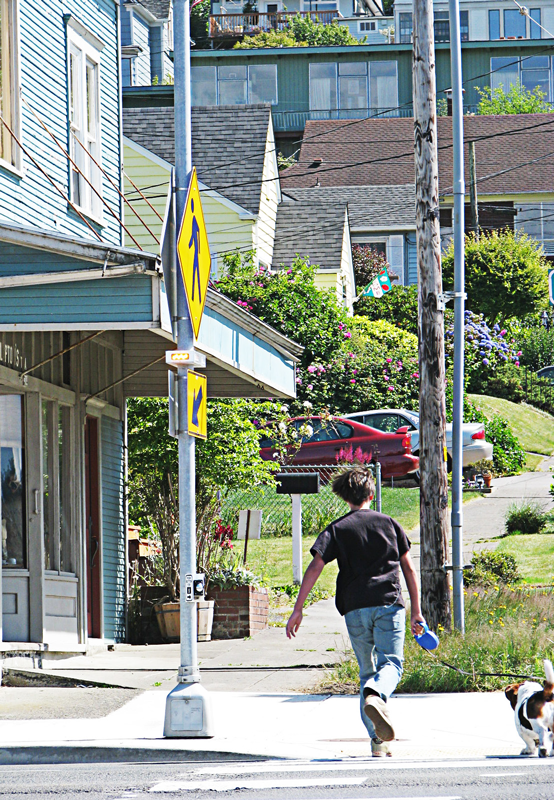











 Rectangular rapid flashing beacons approved by the Federal Highway Administration for uncontrolled pedestrian crossings are a hot product within the traffic industry. In January of this year, the FHWA clarified that the LED indications in RRFBs must meet the SAE J595 Class 1 light intensity of 200 candela. A compliant RRFB indication can no longer “meet the minimum specifications of Society of Automotive Engineers standard J595” as originally stated in the July 16, 2008 memo. What does that really mean?
Rectangular rapid flashing beacons approved by the Federal Highway Administration for uncontrolled pedestrian crossings are a hot product within the traffic industry. In January of this year, the FHWA clarified that the LED indications in RRFBs must meet the SAE J595 Class 1 light intensity of 200 candela. A compliant RRFB indication can no longer “meet the minimum specifications of Society of Automotive Engineers standard J595” as originally stated in the July 16, 2008 memo. What does that really mean?
There are three classes under SAE J595: Class 3 is certified at 20 cds and used for identification only on vehicles such as forklifts, people carts in airports, etc. Class 2 is certified at 50 cds and used primarily with maintenance or service vehicles. Class 1 is certified at 200 cds and is used by police, fire and ambulance vehicles.
A candela is the rating of light output at the source. In simple terms, one candle at one foot = a candela. In comparison, a Class 3 indication is only visible for approximately 50 feet in daylight where a Class 1 indication is visible up to 1,000 feet and up to 1 mile at night.
Technology improves LED light output. (Photo provided)

The Class 1 light intensity contributes to the effectiveness of motorists to yield to pedestrians, at high 80 percent and close to 100 percent, compared to standard flashing beacons of 15 percent to 20 percent.
Does size of the LED indication matter? The July 2008 FHWA memo specified “each RRFB indication shall be a minimum of approximately 5 inches wide by approximately 2 inches high.” The fact is that the surface area of the indication does not determine the level of brightness. The light output of the LED and photometric qualities of the reflector and lens determines how many LEDs must be used to provide the required Class 1 light level. Even if a signal contains numerous LEDs, it still may not have the 200 cd intensity required by the FHWA. Why is that?
There are several types of LEDs used in the manufacturing of the indications, and technology continues to improve the quality. For example, one Luxeon style of diode, developed in 2000, has the same light intensity as 18 5mm diodes developed in the 1980s. Six Luxeon diodes housed in a RRFB indication produces approximately the same light intensity as 104 55mm diodes!
There are inherent losses with any LED fixture design. All light produced by the LED must be controlled to optimize efficiency. LED fixture output values can vary dramatically. As light travels through the lens, reflection and refraction may cause loss of intensity. Lens clarity and material used affect the visible light.
Other factors affect the light intensity. In addition to the type of diode, the reflector used to distribute light affects signal intensity. The style of the reflector in combination with the diode in the RRFB indication determines how the light is spread.
Knowing how the light is dispersed may be beneficial with some installation settings as in hospitals, neighborhoods, etc. There are two types of designs that dispense light: focused and wide angle. Light emitted in a “cone” shape is fairly focused. The light widens with distance. A linear design gives a wider angle of light. You lose some of the direct light intensity because of the light spread. Both types are classified in the Class 1 features.
All these factors coming together create the overall photometric qualities of the indication: the LED, reflector, and lens and refractor system. The efficiency of the diode and engineering of the indication design determines the quality and intensity of the light emitted. To confirm if RRFB indications meet the FHWA Class 1 requirement, request a copy of a lab certificate.
The bottom line, as outlined in the original FHWA memo, is that the “data clearly documents very successful and impressive positive experience with the RRFBs at crosswalks …”
Submitted by Susan Marshall, Electrotechnics Corporation and Mike Grenert, Whelen Engineering, contributing author.